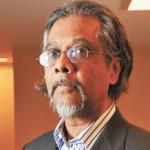Lecture 1: Introduction to Course
Lecture 1 is the introduction to the first semester of a two-semester sequence of a classical approach to economic analysis, built around the material in Professor Shaikh's book, Capitalism: Competition, Conflict, Crises, Oxford University Press, 2016. The aim is to show that there exists a coherent alternative to neoclassical and Post Keynesian theory that does not rely in any way on utility maximization, rational choice, rational expectations, or perfect/imperfect competition.
Lecture 2: Microeconomics
Lecture 3: Profit and Production
Lecture 4: Aggregate Profit
Lecture 5: Theory of (Real) Competition
Lecture 6: Competition
Lecture 7: Competition
Lecture 8: Perfect Competition
Lecture 9: Profit & Prices
Lecture 10: Theory of Relative Price
Dr. Shaikh continues with a discussion of the historical aspect of the Theory of Relative Price, and then discusses the meaning of the empirical evidence that was laid out before. Marxist Transformation may turn out to be complete, based on recent mathematical arguments.
Lecture 11: Financial Markets
Dr. Shaikh considers the Stock, Bond, Bank Credit Markets and Finance.
Lecture 12: The Price of Finance
Professor Shaikh reminds us of interest rates, bond prices, equity prices and the relevant empirical evidence.
Lecture 13: Trade Theory, International Competition
Dr. Shaikh reiterates how the classical theory of real competition and neoclassical theory of perfect competition are vastly different. He continues with a discussion of Trade Theory and International Competition.
Lecture 14: Continuing Discussion of Real Competition
Continuing from last week (Lecture 13), Dr. Shaikh derives the International Trade Extension the Theory of Real Competition. He also explores the empirical evidence and key patterns.
Lecture 15: System Dynamics
In the final video from the first semester, Professor Shaikh discusses the overall structure of the course and the book, disorder, and system dynamics.
Lecture 16: Macroeconomics
Join Professor Shaikh for the start of the Spring Semester. This lecture will begin the study of Macroeconomics, in "Capitalism".
Lecture 17: Macroeconomics
Professor Shaikh reiterates the discussions of the Fall Semester, and proceeds with the differences between classical and neoclassical approaches.
Lecture 18: Classical, Neoclassical, Keynesian Economics
The previous lecture introduced the idea of excess demand. (Spending by the private sector) - (Savings) = Excess Demand. Professor Shaikh continues, in this lecture, to discuss the differences between Classical, Neoclassical and Keynesian Economic theories in this area.
Lecture 19: Phillips’ and Friedman’s theories
Professor Shaikh continues, after his discussion of Keynes' economics, (not Keynesian Economics), and the dominant policies in the 1960's and 1970's, and Phillips' theory of the relationship of unemployment and money wages. Today he examines Friedman's explanation of where prices come from, and the rise of neo-Walraisian economics.
Lecture 20: Kaletskyan and Post-Keynesian Economics
Today, Professor Shaikh covers the Kaleckian and Post-Keynesian traditions.
Lecture 21: Theory of Effective Demand
Today's lecture reconsiders the theory of effective demand.
Lecture 22: Production & Capacity
Professor Shaikh continues to discuss Production and Capacity. He expands upon different types of investment: Circulating (raw materials and labor) and Fixed (expansion of capacity), both dependent upon the expectation of Production. The discussion of expansion and shrinking of firms contributes to household incomes and aggregate demand.
Lecture 23: IS-LM
Classical (dynamic) argument of IS-LM. Dr. Shaikh makes the argument that the interest rate is determined by the market, by the competitive profit rate equalization.
Lecture 24: Demand, Profitability and Growth
Dr. Shaikh continues with the discussion of aggregate demand and its effect on profitability and profitability's effect on growth rate.
Lecture 25: Wage Share, Unemployment Rate
Dr. Shaikh continues his investigation of Wage share, unemployment rate; references Goodwin model.
Lecture 26: Labor Force, Wages, Unemployment
Dr. Shaikh continues with this discussion of the labor force, wages, unemployment and relevant models.
Lecture 27: Theory of Modern Money and Inflation
Dr. Shaikh discusses the theory and empirical evidence, and a simple framework of inflation.
Lecture 28: Theory of Inflation, Growth Rates
Dr. Shaikh addresses underlying variables of growth, profitability and demand and prices, the Classical Theory of Inflation, Empirical Testing.
Lecture 29: Postwar Accumulation, Forces Leading to the Current Crisis
In the second to last class, Dr. Shaikh puts together all the arguments into an analysis of postwar accumulation and the forces that led to the current crisis.
Lecture 30: The Final Lecture
In the final lecture, Dr. Shaikh reminds us of the purpose of this work, to create an alternate framework, enabling us to make analysis with imperfections, without depending only upon orthodox principles.
